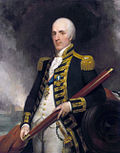The Malta Portal
Malta, officially known as the Republic of Malta, is a small island nation comprising an archipelago of seven islands (Malta, Gozo (Għawdex) Comino (Kemmuna) Filfla, Cominotto (Kemmunett) Manoel, Selmunett (St.Paul's Islands)) in the Mediterranean Sea. A country of Southern Europe, Malta lies south of Sicily, east of Tunisia, and north of Libya. The country's official languages are Maltese and English. Roman Catholicism is the most practised religion. The islands constituting the Maltese nation have been ruled by various powers and fought over by many states for centuries. Malta has been a member state of the European Union (EU) since 2004 and it is currently the smallest EU country both in population and in area.
Selected Article
Selected LocalityMellieħa (pronounced me-lee-ha), also called Il-Mellieħa, is a large village in the northwestern part of Malta. It is a popular tourist destination during the summer months. Mellieħa as a village developed under the British colonization. The British started proposing people to settle in this area by giving leases to the population. It was only during this time that it started to be inhabited again as for two centuries it was abandoned due to fear from attacks of corsairs and Saracens, and beforehand there were only some villagers used to live in the area. After the British encouraged Maltese to settle in Mellieħa, the village kept on flourishing. Nowadays, the village also includes a large number of villas. Many foreigners choose to settle in Mellieħa. (more...) Selected Picture Photo credit: Jean-Christophe Benoist
The Grandmaster's Palace in Valletta is built around two courtyards, one of which is dominated by a statue of Neptune. There are two entrances in the front and one entrance from Piazza Regina just west of the Bibliotheca. The entrance to the state rooms is in the Neptune Courtyard via a spiral staircase. The ceiling of this entrance was painted by Nicolau Nasoni da Siena in 1724. Did you know
UNESCO World Heritage SitesMalta topicsRelated PortalsThings You Can Do
Geography stubs · People stubs · Malta stubs in general
Help us categorize Maltese-related articles
Have a look at WikiProject Malta. Wikipedia in Maltese
Associated WikimediaThe following Wikimedia Foundation sister projects provide more on this subject:
Discover Wikipedia using portals | ||||||



























